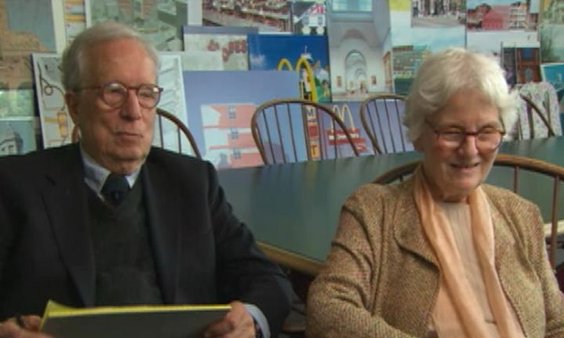NEXT STORY

The many sides of Bob Venturi
RELATED STORIES

NEXT STORY

The many sides of Bob Venturi
RELATED STORIES


|
Views | Duration | |
|---|---|---|---|
| 81. An interview at Hagia Sophia and work for the American Embassy | 52 | 02:10 | |
| 82. Cosmopolitan and local | 32 | 03:51 | |
| 83. Our clientele | 34 | 02:51 | |
| 84. Basurama and using waste (Part 1) | 41 | 04:01 | |
| 85. Basurama and using waste (Part 2) | 33 | 05:26 | |
| 86. Our take on Modernism | 75 | 02:40 | |
| 87. The many sides of Bob Venturi | 61 | 00:51 | |
| 88. Visionaries | 52 | 02:06 | |
| 89. Life as a woman in architecture (Part 1) | 109 | 03:45 | |
| 90. Life as a woman in architecture (Part 2) | 97 | 05:46 |


[DSB] For someone who from the age of two, knew about Modern architecture… really literally, when I was two I saw blueprints, I remember it, and I was two years old and there were these prints and they were really blue. People haven’t had blueprints in years, so you could, kind of, date it. But, I’ve had this love affair with that house, with its flat roof and its steeled alley columns.
This is in South Africa?
[DSB] In Johannesburg, our house there, which was about the second Modern house ever built in Johannesburg.
I’ve seen a picture.
[DSB] And, so, I’m not about to depart from Modernism, particularly as I’m a moralist. Someone once said there’s a corner of heaven for those… reserved for those who believe in morality and the arts. So, I say I’m a functionalist for moral reasons and I believe in that morality, but I’m also a functionalist for aesthetic reasons. I think following functional precepts very… letting them lead you to ugly places can help aesthetics develop and change and adapt. And you can find excitement, aesthetic excitement in doing that. And that’s the kind of aesthetics that we like, the aesthetics of… I call them agonised aesthetics, sometimes, transitional aesthetics. We like antique furniture that isn’t quite pure – the legs are too big and the feet are too big like a puppy because they’re heading somewhere else, or something like that. We like impure mixtures. So, all of this goes with our take on Modernism and, I think, I’ve shown how we refurbish the idea of the Neue Sachlichkeit, the New Objectivity, to cover this and we redefined functionalism. So, it isn’t blindly following just the program of the first client. Our view on Urbanism, our view on cycles make us see there may be 100 different functions because we’ve seen buildings in use in housing from the 12th century, in European cities. And we know the plumbing isn’t the same and the way houses are lived in isn’t the same. So, all of that makes us redefine functionalism. And then the social categories we’ve learned and the technical ones we’ve learned make us have other means of redefining functionalism too. So, its Modernism adapted and these are the ways in which we’ve adapted it.
Internationally renowned architects Robert Venturi (1925-2018) and Denise Scott Brown (b.1931) have helped transform contemporary design through their innovative architecture and planning. Winners of numerous prestigious awards, their designs have championed multiculturalism, social activism, symbolism, pop culture, history and evolving technologies.
Title: Our take on Modernism
Listeners: Thomas Hughes
Thomas Hughes is Mellon Professor Emeritus of the History of Science at the University of Pennsylvania and Distinguished Visiting Professor at the Massachusetts Institute of Technology. His most recent books include Human Built World, Rescuing Prometheus and American Genesis. He is a member of the American Philosophical Society, US National Academy of Engineering, Royal Swedish Academy of Engineering Sciences and the American Academy of Arts and Sciences.
Duration: 2 minutes, 40 seconds
Date story recorded: 22nd to 23rd September 2006
Date story went live: 27 May 2010